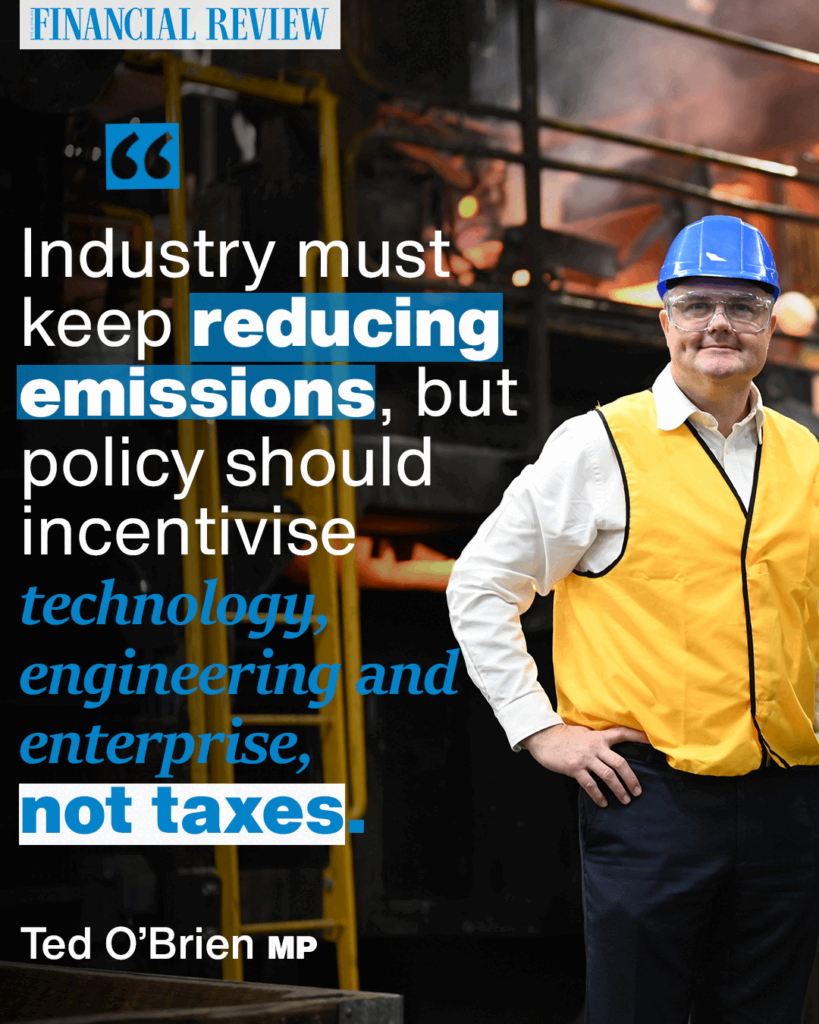Labor’s carbon tax won’t work, it will weaken the economy and worsen the environment.
The economic theory of carbon taxes isn’t the problem; but like many theories, real-world application is where it falls apart.
Other nations have looked to carbon taxes, but despite grand visions of a globally coordinated solution, one has never eventuated.
I’ve just returned from a study tour in the United States on climate change and energy issues.
Discussions with government and business leaders, think tanks and academics revealed that the US doesn’t have a national carbon tax and isn’t likely to.
One of the few times carbon taxes featured in my discussions was with Professor David Victor from the University of California who wrote an entire book about why cap-and-trade programs and carbon taxes fail.
Labor hasn’t learnt these lessons and it has a blind spot towards the US.
Instead, it’s importing climate and energy policy from Europe.
Why, I don’t know. Europe has some of the world’s highest electricity prices and it’s vulnerable on energy security.
Labor is following Europe by introducing a carbon tax, except its version is one of the world’s most punitive.
Its cunning plan is to reform the Safeguard Mechanism as a trojan horse for introducing the tax.
215 Australian businesses will have to reduce their emissions by 4.9 percent each year to 2030.
This is the fastest rate of decline imposed by any government; higher than even the European Union’s 4.4 percent, under its Emissions Trading Scheme.
Labor’s carbon tax excludes the electricity sector.
Reducing emissions by 4.9 percent each year is unachievable for Australian industry because the technology simply doesn’t exist.
And this is where Labor’s carbon tax comes in.
This government is pricing emissions at $75 a tonne, over three times higher than the $23 carbon price set by the previous Labor Government.
It’s higher than carbon prices of eight of Australia’s top 10 two-way trading partners, with the exception of the United Kingdom and New Zealand.
80 percent of Australia’s two-way trade either isn’t covered by a national carbon price or is at substantially lower prices .
Australia’s international competitors in alumina, cement, copper, coal, gas and iron ore markets do not pay a carbon price, including the US, Malaysia, Thailand, Qatar, Russia and India.
When a company fails to reduce its annual emissions by 4.9 percent, it will have to buy Australian Carbon Credit Units (ACCUs) to offset the shortfall.
While government-issued ACCUs will be capped at $75 a tonne, ACCUs on the free market will cost more, as experts forecast demand exceeding supply.
And what happens when ACCUs aren’t available?
Businesses pay the government a $275 per tonne penalty fee.
Take a manufacturing business which can’t find or fund technology to cut 4.9 per cent from its annual one million tonnes of emissions.
Its ACCU liability to 2030 could cost $93 million and if the market is, say, 50 percent short of ACCUs, it’ll pay the government $171 million over 7 years.
EU businesses receive billions of euros in support annually, in the form of free credits which some estimate to have reached €50 billion since the ETS started.
EU industries are also protected by CBAM – a Carbon Border Adjustment Mechanism.
The economic impact of Labor’s carbon tax is obvious.
Some manufacturers will survive by passing the tax on to households that are already struggling due to higher prices under Labor.
Others will close their doors, stripping people of jobs and regional communities of big employers.
And it’s not just the economy that will suffer, so too will the environment.
As Australian manufacturers close their doors, operations in higher emitting markets will fill the void.
Steelmakers and smelters tell me they’re already considering relocating to China or India due to Labor’s energy prices. Throw a carbon tax into the mix and see what happens.
According to a 2020 Climate Leadership Council analysis, Australian manufacturers are three to four times more emissions efficient than those in China and India.
So if a manufacturer that generates one million tonnes of emissions annually relocates to India, an additional three million tonnes of emissions will be released into the atmosphere every year.
This is greenwashing, Labor style.
Australian industry must keep reducing emissions, but policy should incentivise technology, engineering and enterprise – not taxes.
Carbon trading and ACCUs have a role to play, but not to facilitate a punitive taxation regime.
Government policy that decapitates the economy instead of decarbonising it should be rejected, and so too should the outsourcing of emissions that leaves the world worse off.
